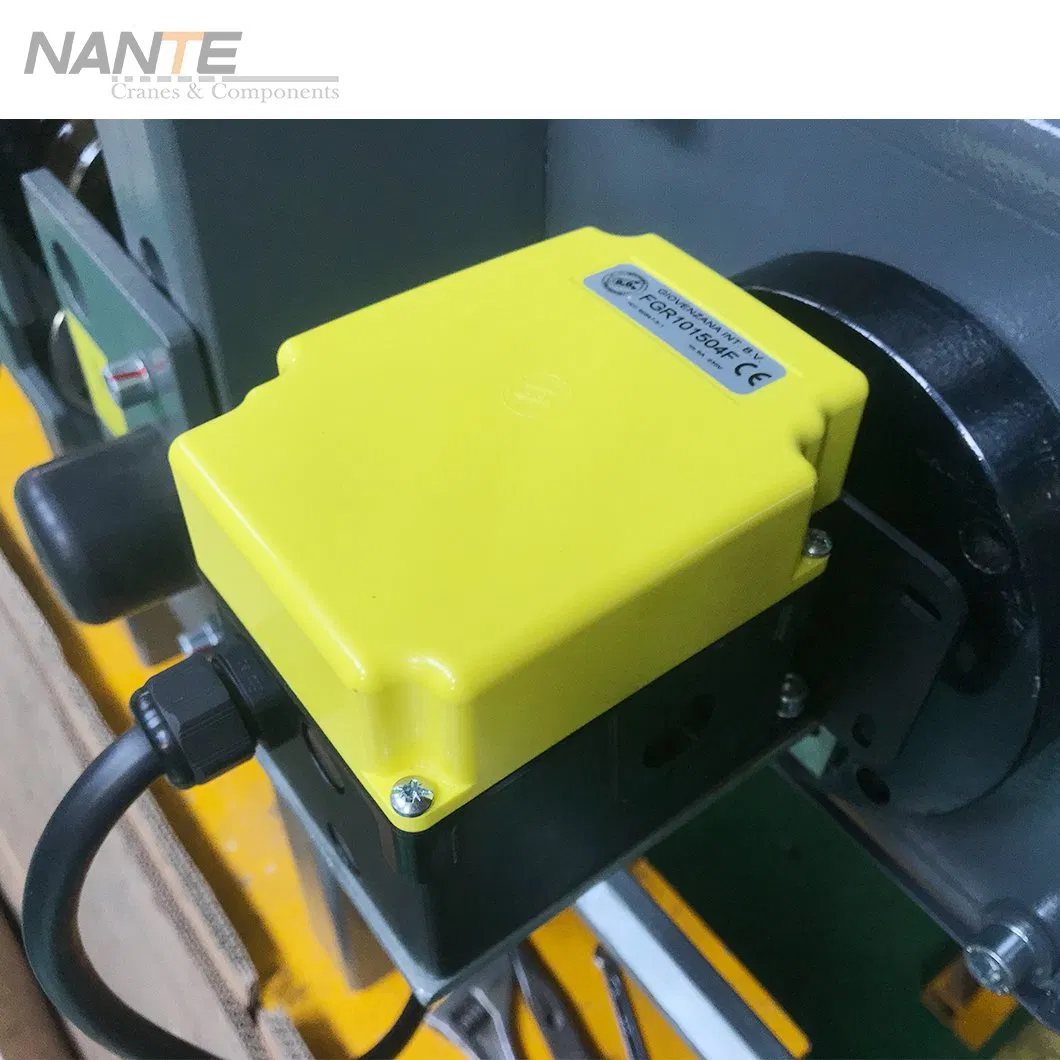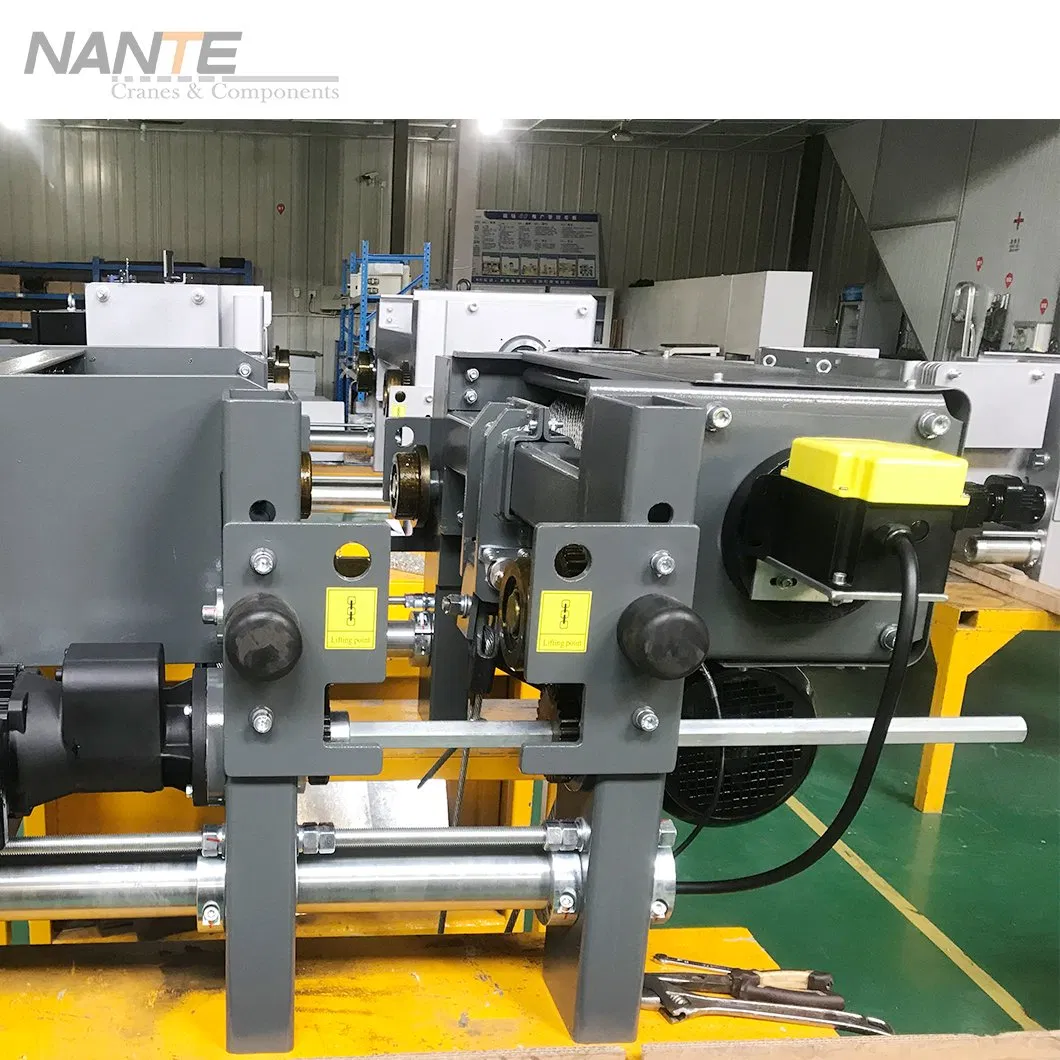Enhancing Crane Safety in Bridge and Tunnel Construction with Lifting Height Limiters
Enhancing Crane Safety in Bridge and Tunnel Construction with Lifting Height Limiters
Date: 2025-07-24 Share:
Introduction: Managing Lifting Risks in Confined Construction Environments
Bridge and tunnel construction presents unique operational challenges. These environments often involve tight vertical clearances, dense structural elements, and complex rigging requirements. Cranes are essential for transporting and positioning materials—but without the right safety mechanisms, they can also become a source of risk.
One of the most overlooked hazards is over-hoisting, which can result in collisions with beams, tunnel ceilings, scaffolding, or other structures. To mitigate this, crane lifting height limiters—also called height limit switches—have become a key safety component in modern construction cranes.
At Nante Crane, we integrate height limiters into our crane systems to ensure not only compliance with international safety standards, but also smoother, more efficient, and incident-free operations in complex projects.
What Is a Crane Height Limiter?
A crane height limiter is a safety device designed to restrict the vertical movement of a crane’s hook block or lifting assembly. When the hook approaches a predefined upper limit, the limiter automatically triggers the hoist system to stop or slow down, preventing collisions with overhead structures.
Height limiters are critical in any confined lifting operation, and especially essential for:
Tunnel excavation sites
Bridge deck installations
Underground infrastructure projects
How Do Crane Height Limiters Work?
1. Mechanical Height Limiters
These typically use a cam-operated rotary switch that is triggered when the hook reaches a certain height. They’re robust, easy to maintain, and ideal for rugged construction conditions.
2. Electronic or Sensor-Based Limiters
Advanced limiters use sensors, encoders, or programmable logic controllers (PLCs) to monitor the hook’s position in real time. These are more precise and often integrate with the crane’s central control system, allowing for fine-tuned safety automation.
Both types prevent:
Load block collisions with the crane head
Structural damage from over-hoisting
Unnecessary wear on mechanical components
Why Are Height Limiters Essential for Bridge and Tunnel Projects?
The Unique Hazards of Confined Construction Zones
Bridge and tunnel sites are full of risk factors that height limiters help control:
Low ceilings and overhead obstructions: Tunnel roofs, bridge girders, and overhangs leave very little margin for error.
Structural collision risks: Over-lifting can damage temporary supports, frameworks, or the crane itself.
Limited operator visibility: In underground or obstructed environments, it’s difficult for crane operators to judge vertical distance accurately.
Height Limiters Prevent:
Accidental collisions with overhead beams
Structural failure or equipment damage
Load drops due to sudden halts or impacts
Safety violations and project delays
In short, height limiters are not just a feature—they’re a requirement in bridge and tunnel projects where safety and precision are paramount.
Key Benefits of Crane Height Limiters
1. Enhanced Worker and Site Safety
Height limiters reduce the risk of falling objects, crane overloads, and sudden mechanical failures. This protects personnel and equipment on the ground.
2. Reduced Downtime and Repair Costs
Preventing collisions means avoiding costly crane repairs and project stoppages. Height limiters offer proactive protection that saves time and money.
3. Regulatory Compliance
Height limiters help meet international and local safety codes, including:
ISO 10245-1 – Safety requirements for limiting devices
FEM 9.831 – European crane safety guidelines
OSHA 1926 Subpart CC – U.S. crane and derrick safety standards
4. Improved Operational Accuracy
With automated height controls, crane operators can focus on alignment and load positioning without constantly monitoring clearance zones.
Choosing the Right Height Limiter for Your Crane
Not all height limiters are created equal. Selecting the right solution depends on your crane type, jobsite environment, and operational needs.
Key Considerations:
Crane Type: Overhead cranes, gantry cranes, and bridge-building cranes may require different limiter configurations.
Lifting Capacity: Choose a limiter rated for the maximum load weight and hoisting speed.
Environmental Resistance: Look for weatherproof and dustproof designs for tunnel and bridge environments.
Installation Compatibility: Ensure the limiter integrates seamlessly with your crane’s existing control systems.
Recommended Features:
High-precision sensors or encoders
Dual-stop safety mechanisms
Manual override options for maintenance
Visual and audio alarms
Pre-programmed safety zones
At Nante Crane, our limiters are designed for extreme environments and come standard or optional with all our bridge and tunnel crane models.
Case Study: Tunnel Construction in Urban Southeast Asia
In a recent metro tunnel project, Nante Crane supplied an overhead crane system equipped with dual height limiters. When the load approached the tunnel’s concrete roof, the height limiter engaged and halted the hoist automatically—preventing a major collision that could have halted the project.
This real-world example highlights the critical role height limiters play in accident prevention and project continuity.
Conclusion: Why Safety Starts with Smart Limiters
Height limiters are one of the simplest yet most effective tools for crane safety—especially in bridge and tunnel construction, where every centimeter counts. They prevent over-hoisting, reduce collision risks, protect operators, and keep construction projects on schedule and within budget.
At Nante Crane, we specialize in building cranes with integrated safety-first designs tailored to complex work environments. Our dual height limiter systems offer an extra layer of protection for peace of mind in even the most confined or demanding construction zones.
Frequently Asked Questions (FAQ)
What is a crane height limiter?
A height limiter is a safety device that automatically stops hoisting when the crane’s hook reaches a preset maximum height.
Why are height limiters important in bridge and tunnel construction?
They help prevent collisions with overhead structures and ensure safe operations in confined spaces.
Can height limiters be added to existing cranes?
Yes, many height limiters are modular and can be installed as upgrades to existing crane systems.
What safety standards do height limiters help comply with?
They support compliance with ISO 10245, FEM 1.001, and OSHA standards.
Does Nante Crane offer custom safety solutions?
Absolutely. Nante provides custom-engineered crane systems with optional or integrated safety features, including dual height limiters, PLC integration, and more.





